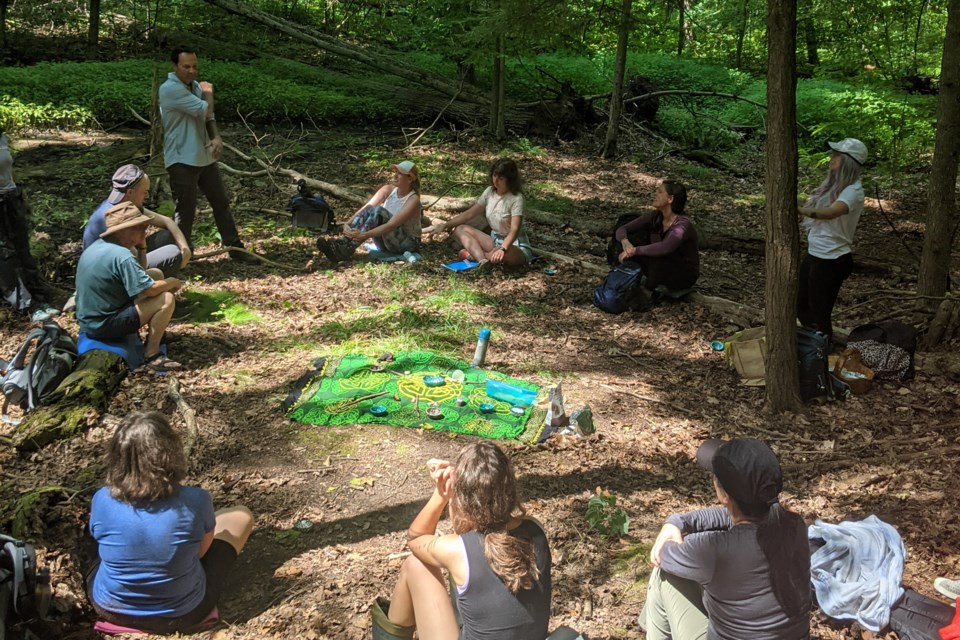Forest bathing, or shinrin-yoku as it’s called in Japan, is the practice of taking in the forest atmosphere. Instead of bathing in water, you’re consciously letting the smells, sights, and sounds in the natural surroundings wash over you.
Studies have found that spending time in nature offers numerous health benefits, including strengthening the immune system, improving cardiovascular and metabolic health, enhancing sleep quality, lowering heart rate and blood pressure, increasing the ability to focus, improving mood, increasing energy levels, and accelerating recovery from trauma, surgery, or illness.
“I personally find that I am less stressed, less anxious, and feel very rested and relaxed after a forest bathing walk. It helps me clear my head of my worries and focus on what’s important,” says Jamie O’Neill who’s been a certified Forest Therapy Guide since 2021 and has been leading guided walks ever since.
“Benefits I've observed and had reported to me by my participants include, overall feelings of peace, wellness, joy, and purpose, increased awareness of our interconnected nature, experiences of spiritual and energetic awareness and wellness, and improved personal and social relationships,” says Brett Sanger, who has completed certification through the Global Institute of Forest Therapy (GIFT) and been guiding forest bathing walks as a service for two years.
One reason trees are so good to be around is the higher oxygen levels in the forest compared to an urban setting. Another is plant chemicals called phytoncides. These organic compounds contain antibacterial and antifungal that help plants fight disease. Exposure to these chemicals can help humans do the same. Evergreen trees like firs, spruce, and pine seem to be the largest producers of phytoncides, and forests with conifer trees may be especially favourable for your
health.
Simply strolling in any natural environment while breathing deeply and mindfully observing your surroundings is enough to reduce stress, anxiety and depression, and boost your health.
However, if you’re looking for a more structured forest bathing experience, you can take a guided walk.
“Participants will be guided through a clearly defined sequence of invitations to slow down, allow senses to open, and experience the environment to deepen the reciprocal relationship between participants and the forest," says O'Neill. "There is no expectation for what participants should experience or receive. Rather, participants spend time in silence, listening and feeling with a quiet and accepting presence.”
“A forest therapy walk is typically two to three hours, covering just around 1 km, and is made up of a series of invitations designed to cultivate deep present moment awareness," says Sanger. "Our focus is placed on pleasurable sensory experiences as gateways into relaxation of the body, regulation of the nervous system, and the deepening of connection with nature and self.”
Conservation Halton hosted a forest bathing walk earlier this summer, and the Hamilton Conservation Authority is running guided forest bathing walks on Aug. 24 and Sept. 21 at the Dundas Valley Conservation Area. Click here for more information about the location, cost, and where to register.
Sanger is finalizing more sessions for the fall season. You can visit his website for upcoming forest bathing walks.



